I recently returned from seven days in Sydney, and my goodness, I’m glad I went during the first few days of the VTL.
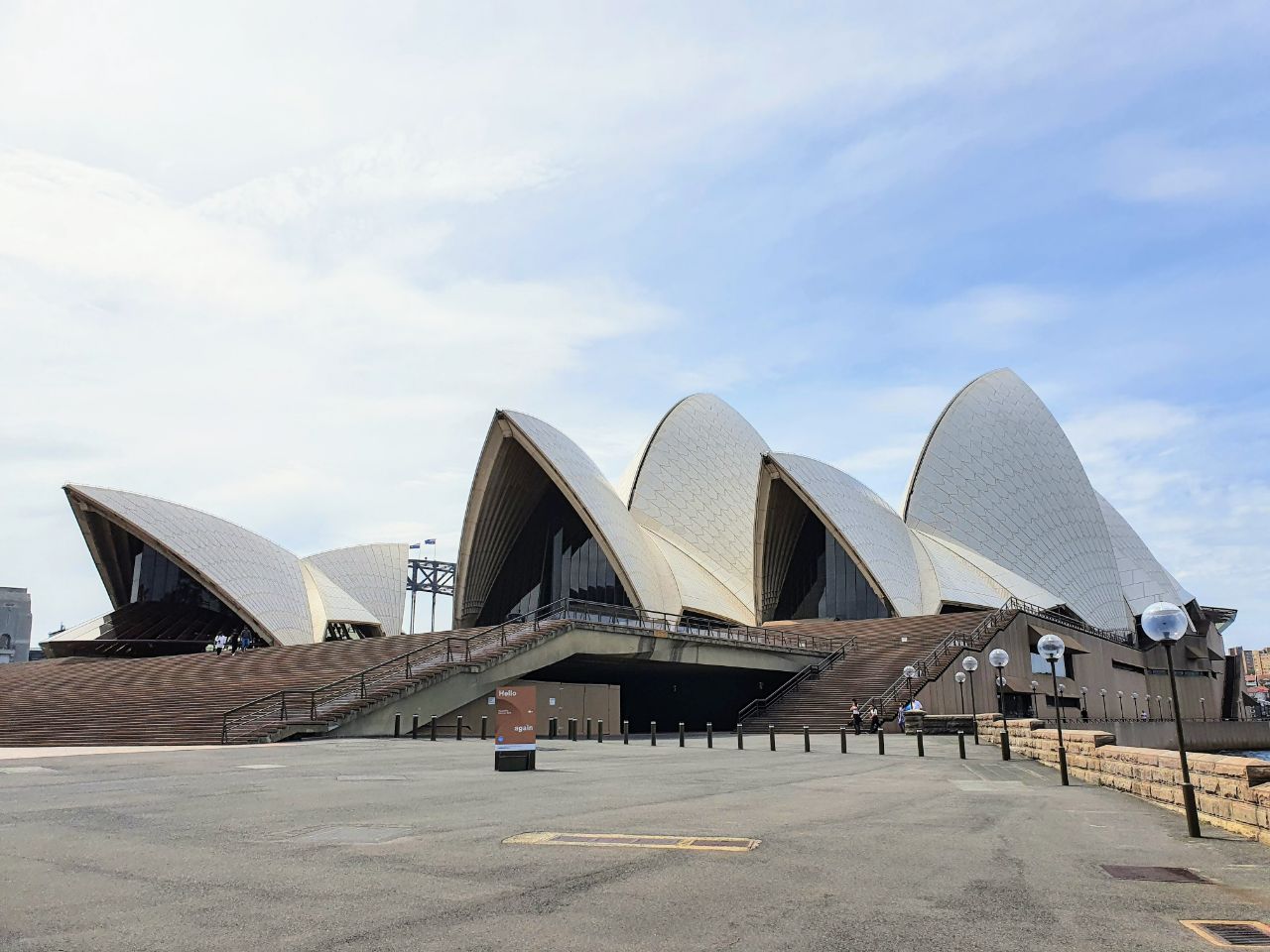
The emergence of the Omicron variant, barely a week after the VTL commenced, has wreaked havoc with many people’s travel plans. International arrivals to NSW and Victoria now need to self-isolate for 72 hours after arrival, and even if Omicron turns out to be much ado about nothing, I just can’t see restrictions easing up before the end of December.
That’s a major buzzkill for those who were looking forward to some sunshine down under, but for those deciding to make the trip nonetheless, here’s some snippets of my on-ground experiences in Sydney.
| 🦘 Journey to the Hermit Kingdom |
It’s important to state upfront that the situation is fluid, and you may find things very different by the time you visit.
For example, NSW has announced that it will ease COVID restrictions when the state hits 95% double vaccination or on 15 December 2021, whichever comes first. Among the changes:
- Masks will only be required on public transport and planes, at airports, and for indoors front-of-house hospitality staff who are not fully vaccinated
- COVID-19 Safe check-ins only required for hospitals, aged and disability care facilities, gyms, places of worship, funerals or memorial services, personal services (including sex services), pubs, small bars and registered clubs, nightclubs, strip clubs, sex on premises and indoor music festivals with over 1,000 people
- There will be no person limit in gyms, indoor recreation and sporting facilities, carpooling will be permitted for all, and fully vaccinated international travellers will no longer need to quarantine on arrival
However, it’s unclear how the recent rise of the Omicron variant will affect this plan. NSW premier Dominic Perrottet has stated there are no plans to adjust the state’s reopening roadmap, but I’d be very surprised if all the proposed changes actually happen.
Self-isolation on arrival
Let’s start with what could very well be a dealbreaker for many would-be travellers.
From 28 November 2021, all international arrivals to NSW and Victoria have been required to self-isolate for 72 hours, in response to the new COVID-19 Omicron variant.
Here’s the relevant details for international arrivals to NSW:
|
If a passenger meets the requirements of vaccination and pre-departure testing and has not been to a country of concern in the last 14 days, they must self-isolate at their residence or accommodation for 3 days. They must travel directly from the airport to their home or accommodation. Once there, they must not leave self-isolation (except for seeking a COVID-19 PCR test) until 3 days have passed and they have a negative result from a test taken within the first 24 hours of arrival, They must comply with the testing requirements and must not enter high risk settings. |
Victoria measures are very much the same, and it basically means that the first three days of your trip must be spent in isolation. You’re only allowed to leave your self-isolation accommodation to take a COVID-19 test (assuming you didn’t take it en route to your self-isolation accommodation after arriving).
Further instructions have been provided for travelling to self-isolation accommodation.
|
When travelling home or to their accommodation to self-isolate, the traveller must:
A person travelling to reach an appropriate location for self-isolation must comply with the following precautions. They:
These records must be provided to NSW Health within 4 hours of requesting the information. When entering a taxi or ride-share vehicle, the traveller must use the COVID Safe Check in feature in the Service NSW App, or check in by opening your camera and pointing it at the QR code to check in your details. The transportation provider must wear a mask that fits securely around the face and is worn over the nose and mouth. The passenger must sit in the backseat wherever possible and maximise the flow of fresh air by opening windows or setting the air conditioning intake to outside air. |
In other words, you must take a private vehicle, taxi or rideshare to your self-isolation accommodation. It’s also possible to rent your own car, if you wish.
If you’re leaving self-isolation to take your PCR test, you must travel by private vehicle, taxi or rideshare, wear a face mask, stay 1.5 metres away from other people, travel directly to and from the testing venue, and return to your self-isolation accommodation as soon as possible.
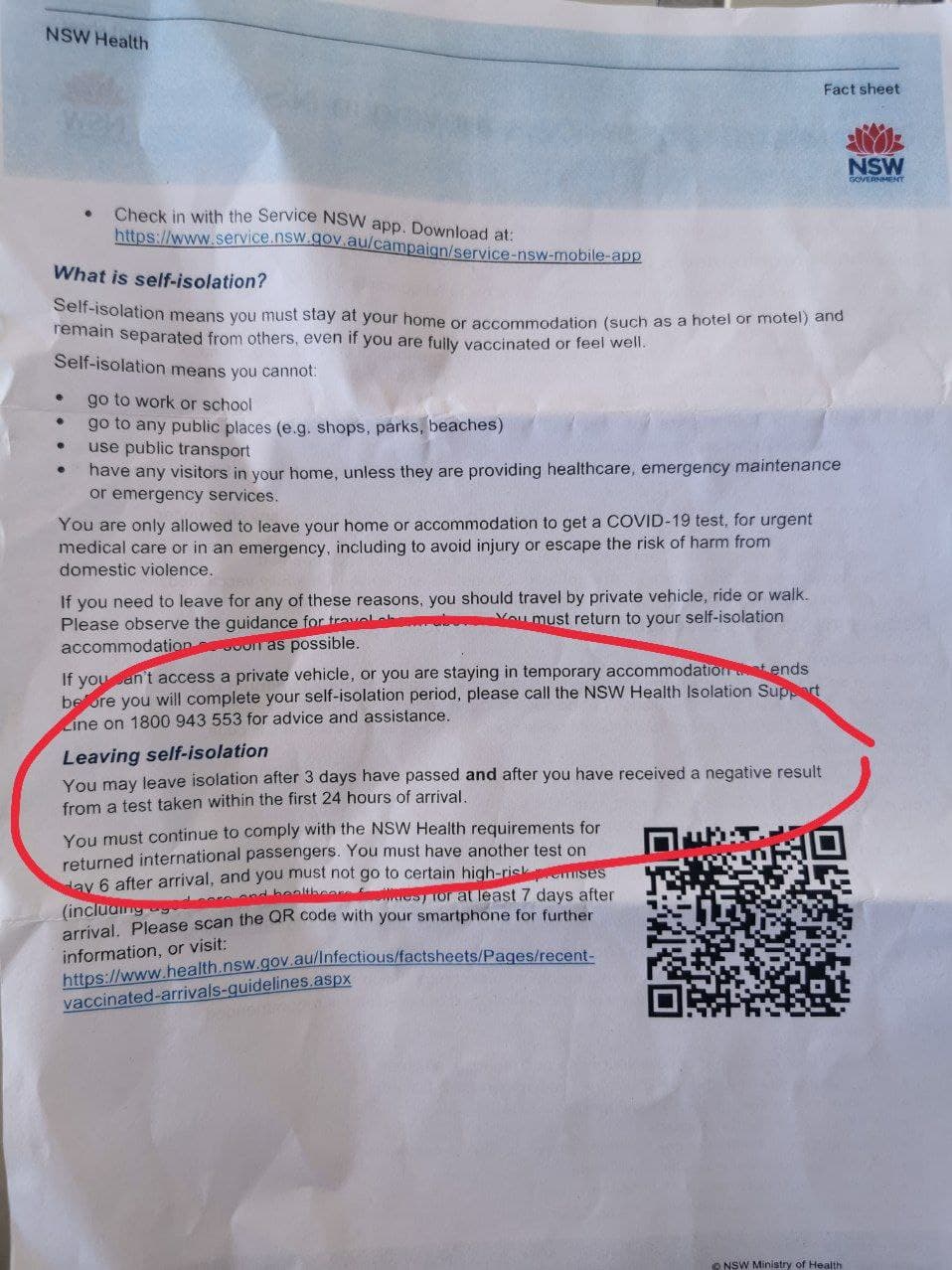
You’re automatically “released” when 72 hours have passed since the time of your arrival in Australia, provided you’ve received a negative result from the PCR test taken within the first 24 hours.
| ❓ Melbourne vs Sydney Isolation |
|
From what I’m reading online, international arrivals into Melbourne have the option of doing their 72-hour isolation in a government-paid quarantine facility (a hotel, where three meals per day are provided). This is a concession granted for those entering Melbourne by 11.59 p.m on 4 December 2021. After this, all travellers will be expected to pay for their own quarantine. Of course, you’re also free to arrange your own self-isolation accommodation, at your own expense. I’m not aware of a similar arrangement for Sydney, however. |
Rules on mask wearing
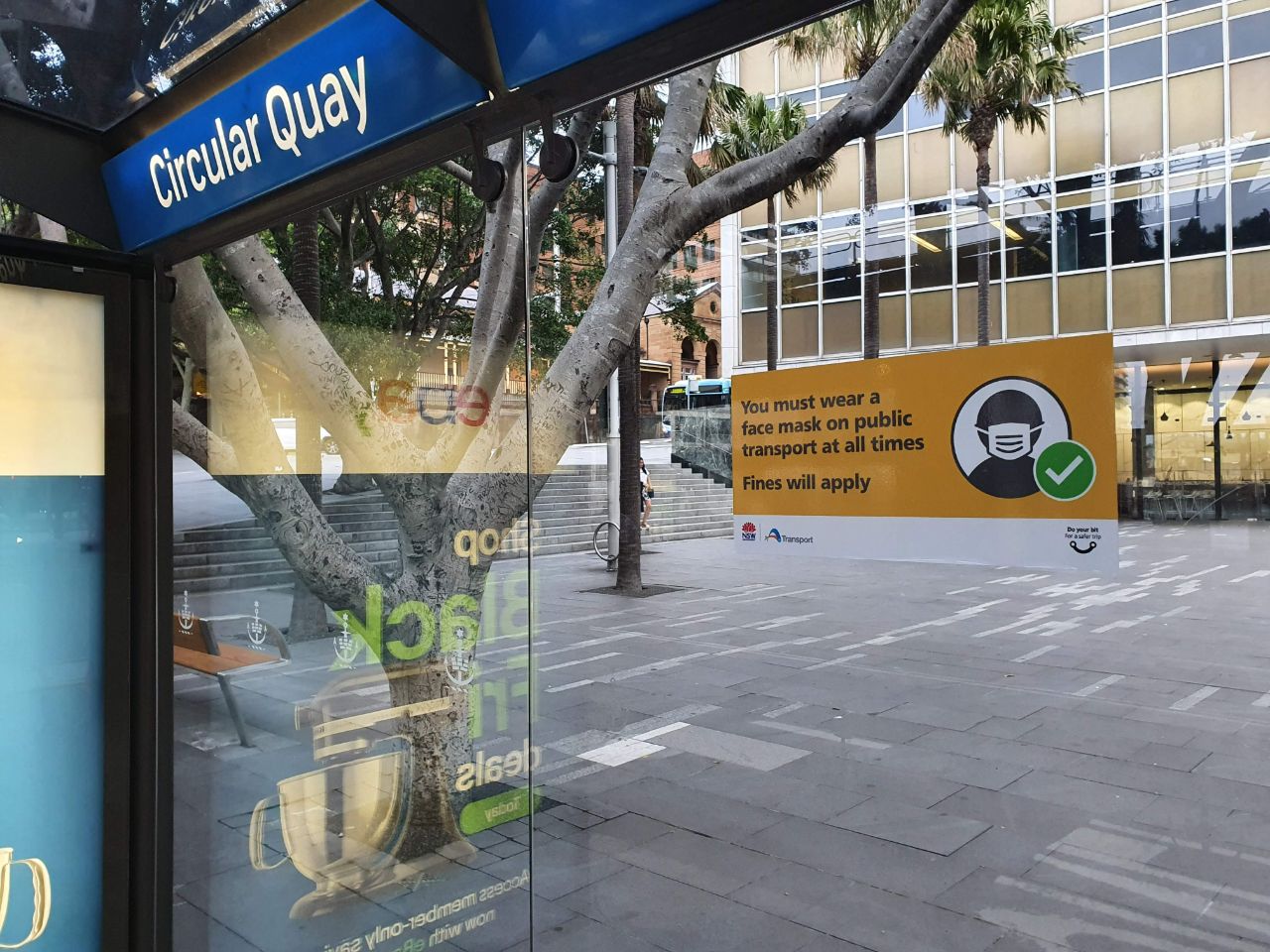
Masks are required on public transport, as well as most indoor settings. While it’s generally well-observed on the former, enforcement for the latter is patchy. When walking through hotels and malls, I regularly observed people not wearing masks.
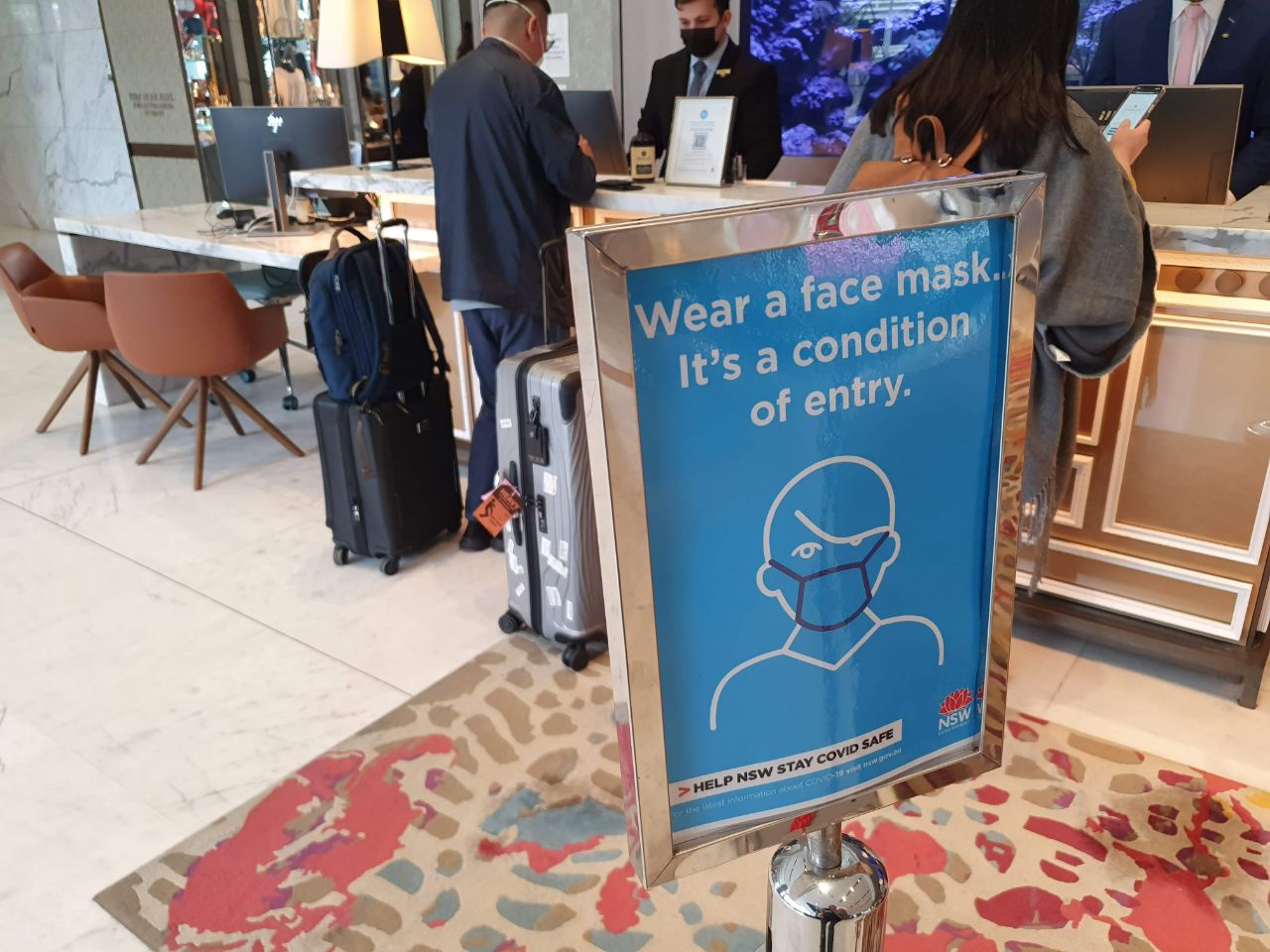
Masks are not required outdoors, but roughly 30% of the people I encountered were wearing them anyway.
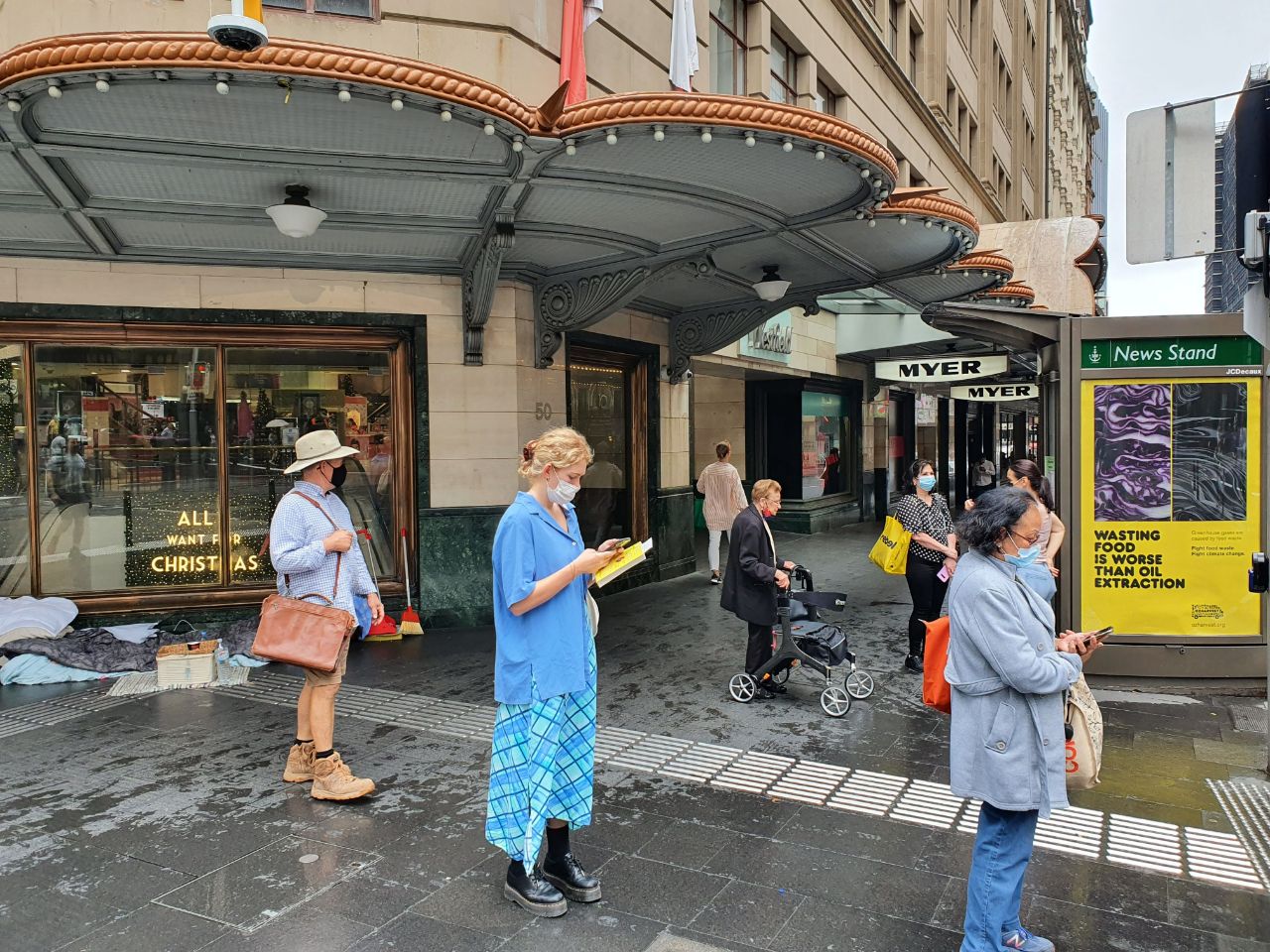
There are no restrictions on the type of mask you can use- cloth, surgical or KN95/N95s are all equally acceptable. Scarfs and bandanas, however, do not meet the definition of a mask.
When you visit a restaurant, you can remove your mask as soon as you are seated.
Contact tracing
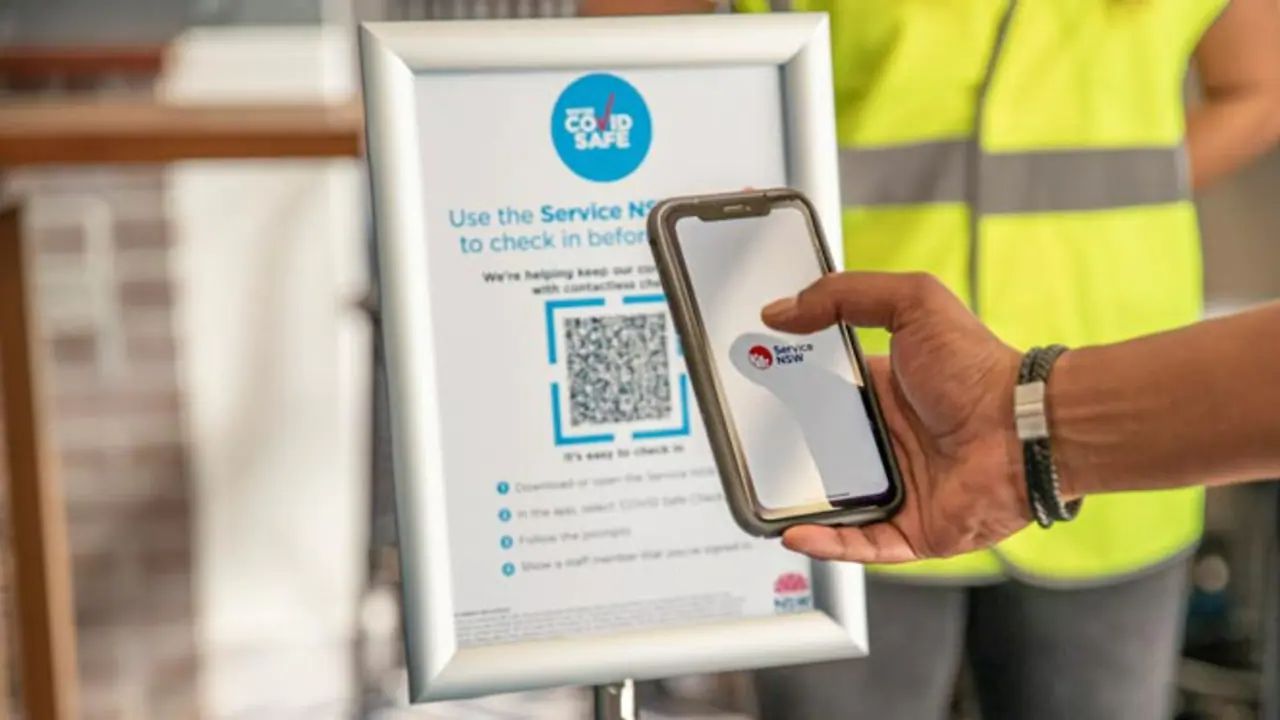
While in Sydney, you should get used to the Service NSW app (Android | iOS). This app is used to scan QR codes for checking into venues.
Virtually every indoor business and premise has a code of its own, and it’s somewhat similar to Singapore except that they don’t position people at the entrances of malls to ensure compliance. Instead, it’s up to individual stores within the malls to check (and in my experience, they did so maybe 50% of the time).

An Australian mobile number is required to register for the Service NSW app, and I think it’s a good idea to get one because it makes life so much easier. You can buy a local SIM card on arrival at Sydney Airport (there’s a ton of SIM card shops in the arrivals area), or purchase one from ICC before flying over.
Recognition of Singapore vaccination certificates

Along with checking in, proof of vaccination is required to visit restaurants, theatres, hotels, indoor recreational facilities, swimming pools, nightclubs, shops and many other venues.
| However, “critical retail premises” such as supermarkets, bakeries, petrol stations, liquor stores, post offices, hardware stores and similar venues are accessible both to vaccinated and unvaccinated individuals. |
Most locals will show their check-in screen from the Service NSW app, which also displays one’s proof of vaccination.
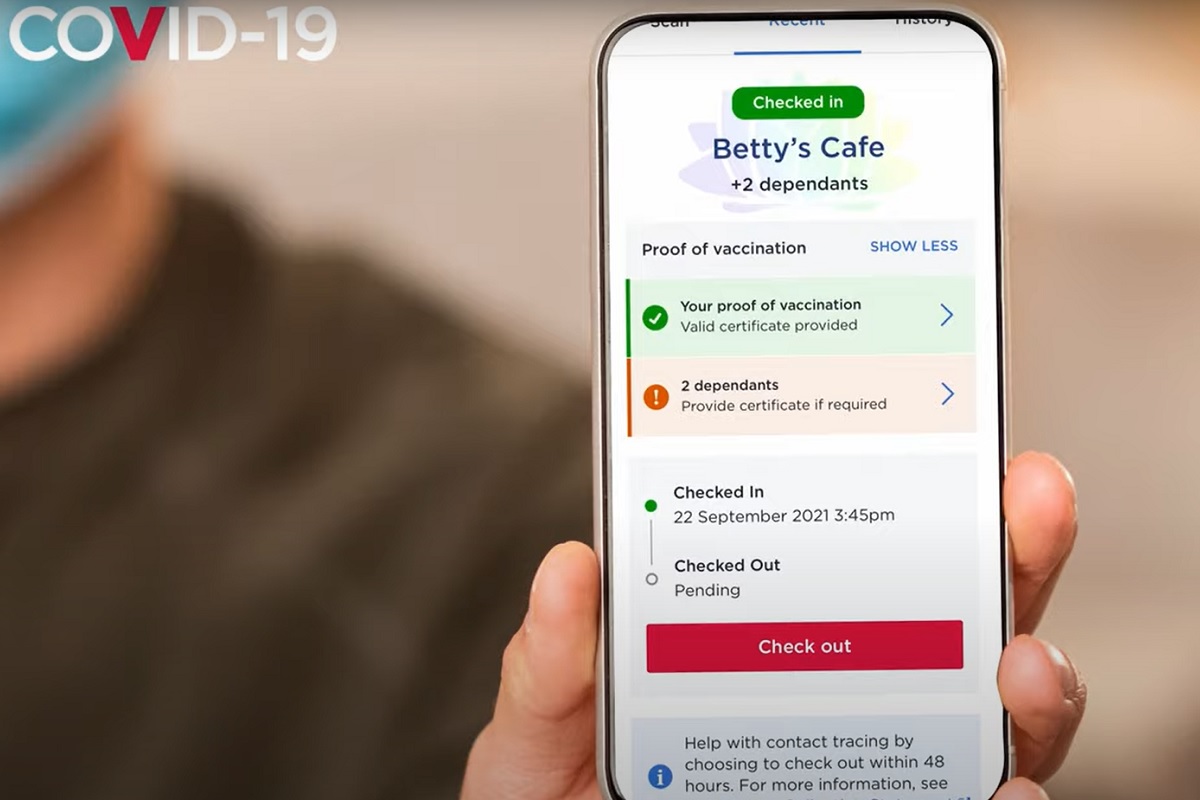
While you can’t display your Singapore vaccination certificate on the Service NSW app, I encountered virtually no issues using my digital/physical Notarise copy. Staff at restaurants and shops were perfectly fine with it, so long as I showed them I’d received two doses of a recognised vaccine.
In my seven days in Sydney, the only time I ran into a problem was when visiting Cucina Porto, a restaurant inside The Star entertainment and casino complex. The manager told me they weren’t allowed to accept any certificates other than the ones in the Service NSW app, and that those vaccinated overseas were expected to visit a local GP to get their vaccination certificate converted.
That didn’t sound right, especially since they were fine with seating me outside (but still indoors, since the restaurant is located within a building).
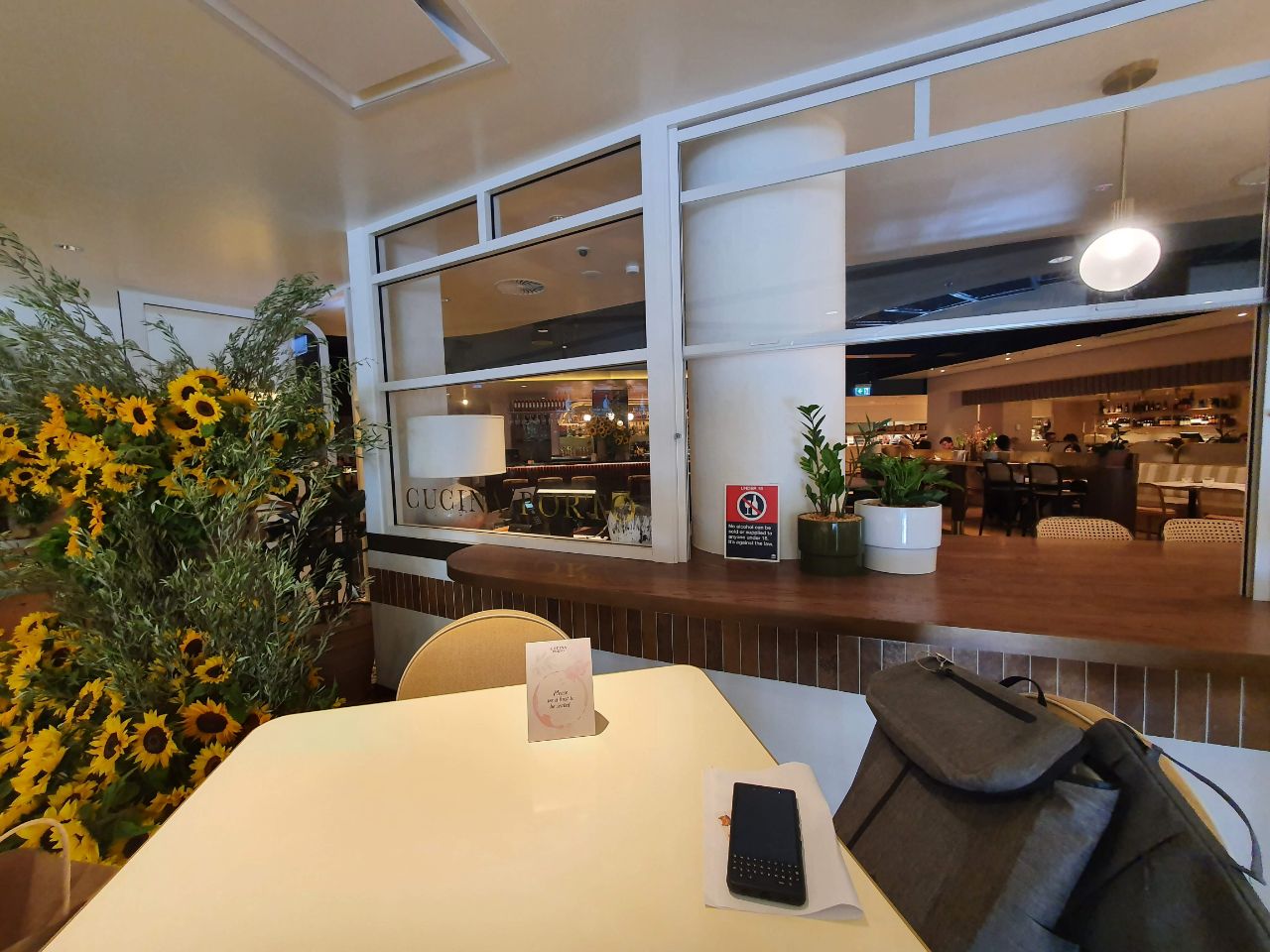
I went to read up on NSW’s rules regarding interstate or overseas vaccinations, and found the following. The bolded paragraph seems to support the restaurant’s assertion…
Interstate and overseas vaccinationsIf you’re a tourist coming to NSW, proof of vaccination requirements are the same as NSW residents. Australians can show their proof of vaccination by displaying their COVID-19 digital certificate, either a digital or paper version. If you’ve received an approved COVID-19 vaccine while overseas, you can have it recorded on the Australian Immunisation Register (AIR) by taking your vaccination documents to a recognised vaccination provider in Australia. If your documents are not in English, you can get them translated at no cost through the Department of Home Affairs. Once your vaccinations have been recorded on the AIR, your COVID-19 digital certificate can be displayed in the Service NSW app. If you’ve received a COVID-19 vaccine overseas that isn’t approved for use in Australia, it cannot be added to the AIR. |
…but on another government site, I found language that suggests visitors can show their Australia Travel Declaration instead.
How can customers, staff and visitors show proof of their COVID-19 vaccination status?Once fully vaccinated (2 doses) with an approved COVID-19 vaccine, there are several options to access and share proof of COVID-19 vaccination:
|
But none of this probably matters, since based on my experience (and that of others) the vast majority of places accept your Singapore vaccination certificate without any drama.
COVID-19 testing
On-arrival testing
Singaporeans travelling to NSW will need to undergo a COVID-19 PCR test:
- within 24 hours of arrival
- on or after Day 6 (this was previously Day 7, but has since been changed)
The day of arrival is counted as Day 0. Both swabs are free of charge, even for non-Australians.
The easiest way to clear the first test is to do it at Sydney Airport, but this is only an option if you can reach the swabbing tent between 7 a.m to 8 p.m.
To find the tent, look for the Express Pick-up signs on the arrivals floor.
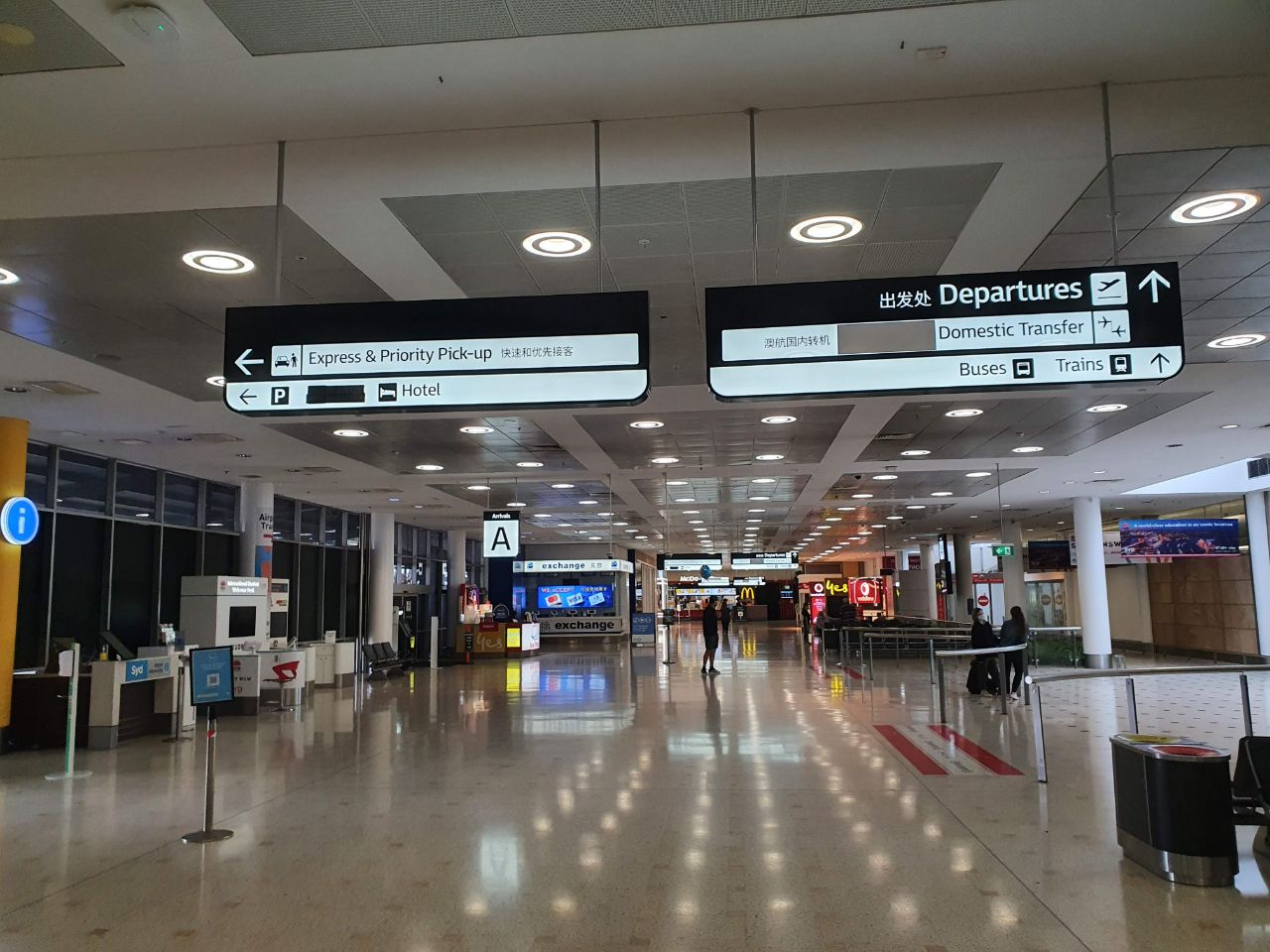
Exit the terminal and continue following the signs (Express Pick-up is highlighted in yellow).
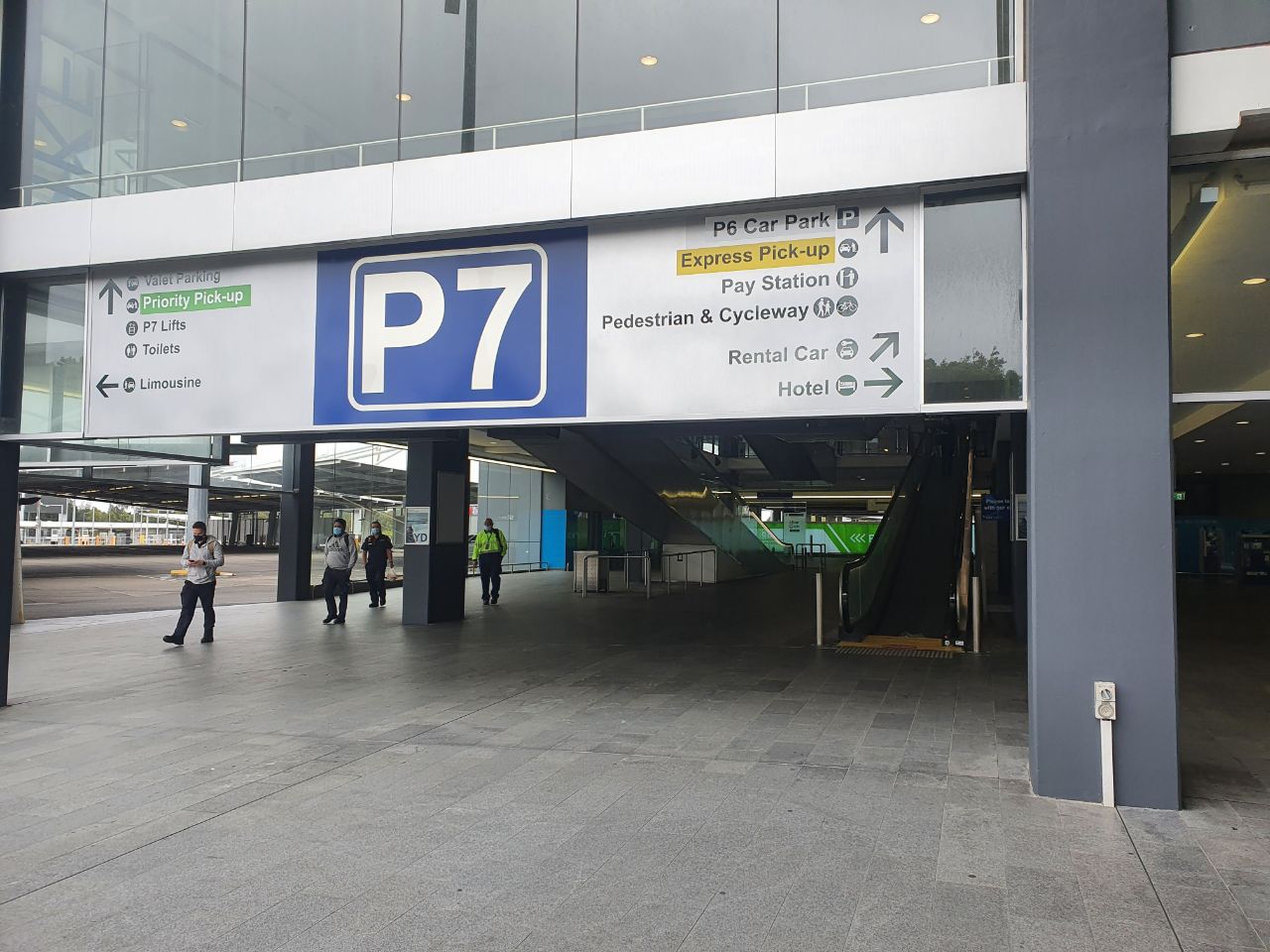
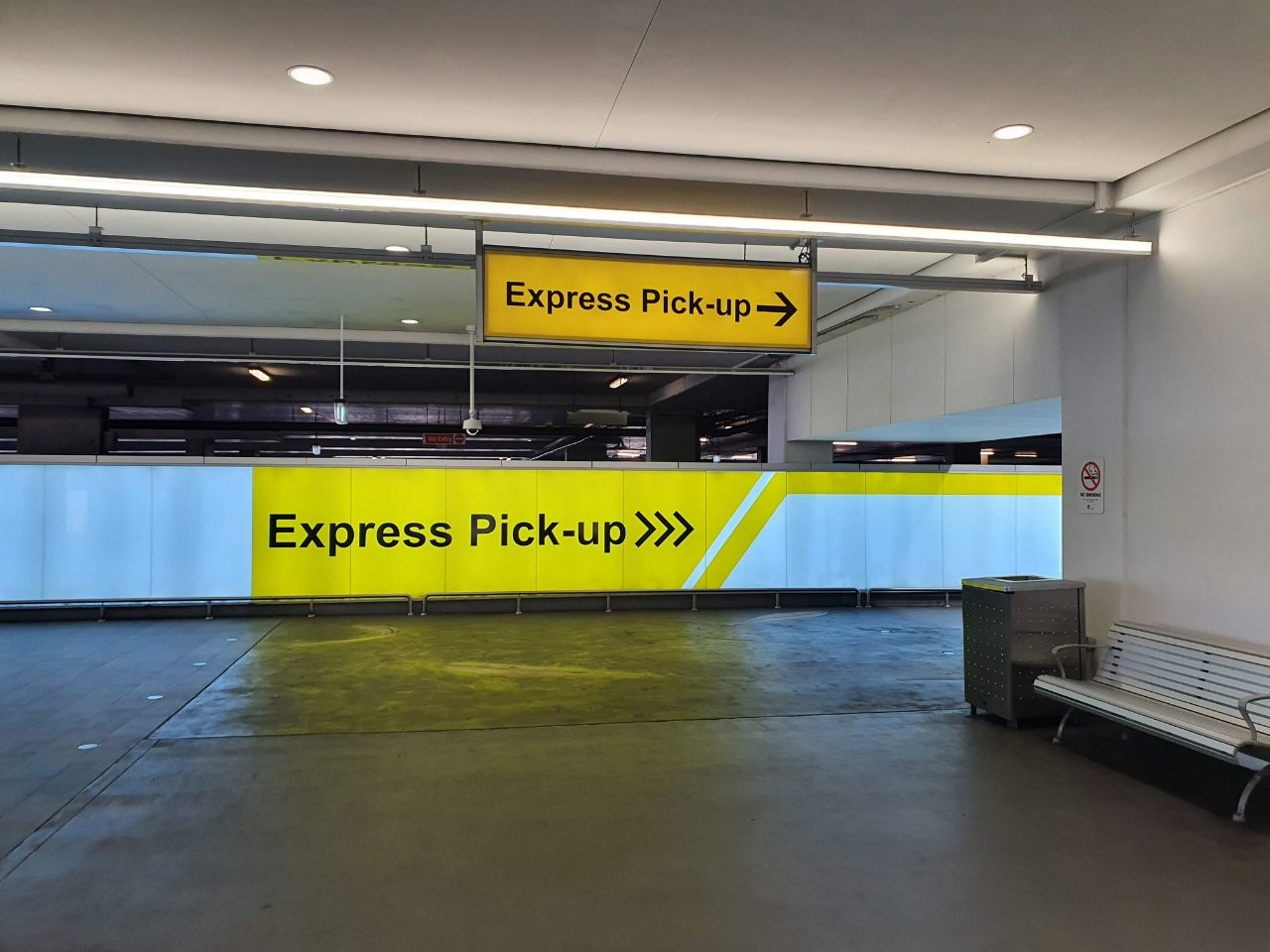

You’ll eventually see an open-air carpark with a drive-through tentage. This is the swabbing area, and no, you don’t need to be driving a car to be swabbed.

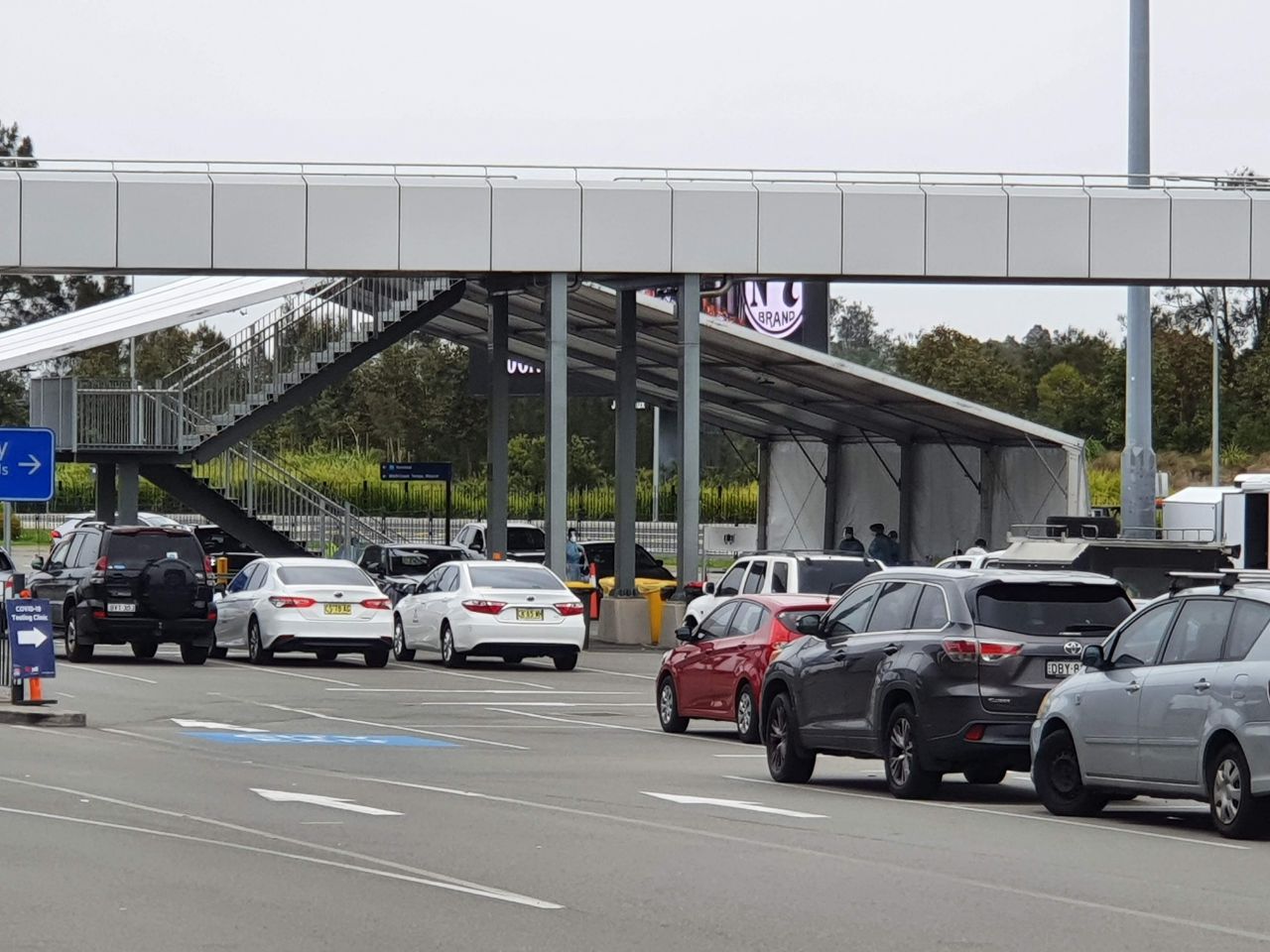
Note: do not visit the swab centre on the departures level; that’s for pre-departure testing (see next section) and tests there are chargeable.
If you arrive outside the 7 a.m to 8 p.m window, you can take a PCR test at any designated clinic within the 24-hour window. Remember, you can leave your self-isolation accommodation to take the PCR test (and only to take the test; please don’t play stupid games), provided you do not take public transport.
Appointments are generally not required. Remember that not all facilities open on weekends, and others such as mobile clinics may only operate on certain days.
I did my test at the 4Cyte Pathology Clinic at 195 Macquarie Street.
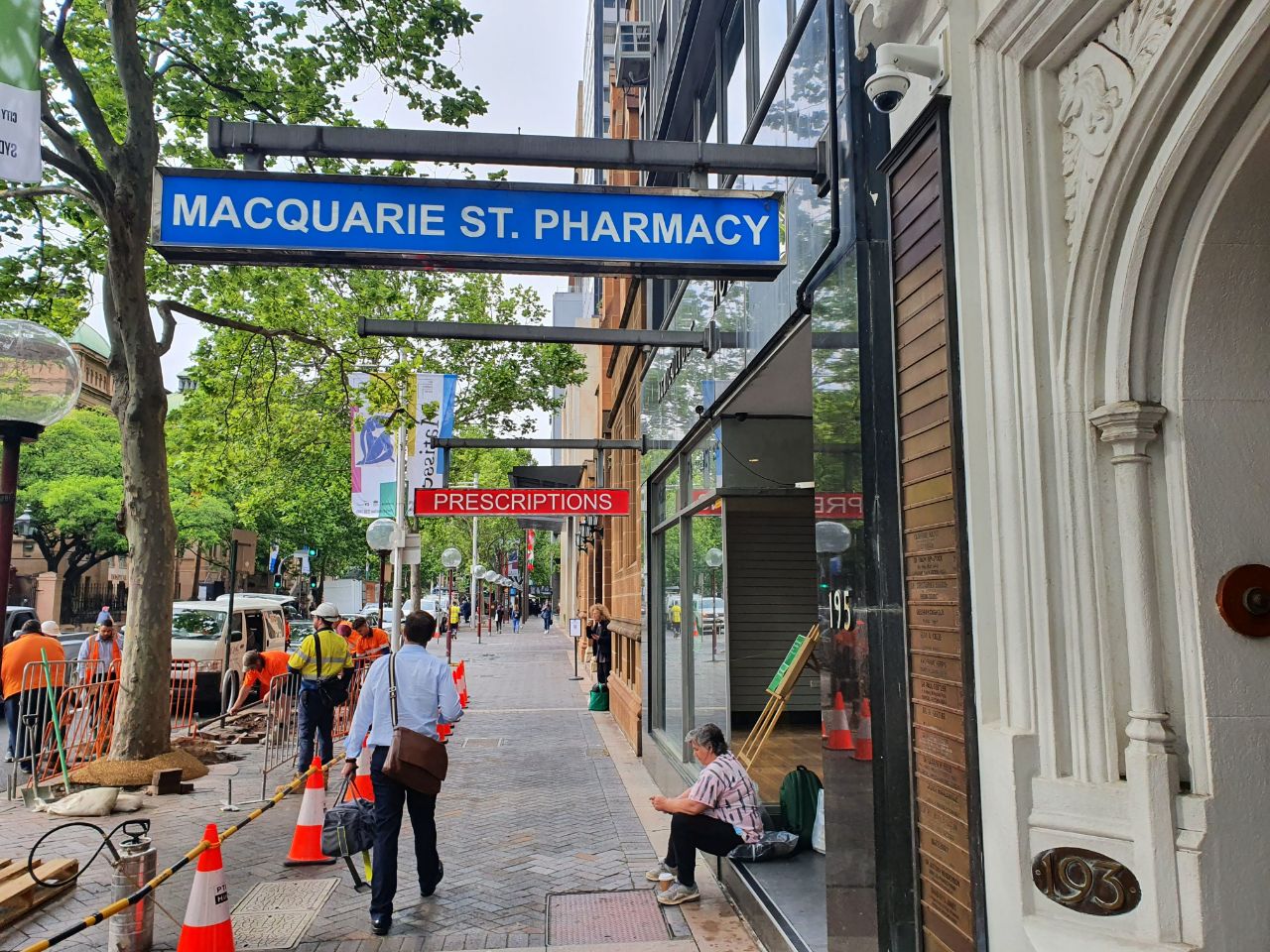
It took about 30 minutes to get swabbed, before which I was asked for an Australian mobile number. I was told, in no uncertain terms, no local number, no swab. I later clarified that this was a 4Cyte company policy, and that other swab providers may do it differently (the one at Sydney Airport does not require it).
The local number is required to send you an SMS with a link to the registration form. The form requests your:
- First name
- Last name
- Mobile number
- Date of birth
- Gender
- Reason for testing (select “patient has been overseas or on a cruise ship within the last 14 days”)

The throat and nose swab was cursory at best, and at no point was I asked for any sort of identification- I could have called myself Swabby McSwabface for all they cared. My guess is the Australia Border Force doesn’t actively check that on-arrival swabs are done (more like if they investigate and find you didn’t do your swab, you’re screwed).
For avoidance of doubt, you cannot use a free test as the pre-departure test for travel to Singapore. The free tests do not provide you with a certificate that bears your passport number/date of birth, which is needed for travel.
Pre-departure testing
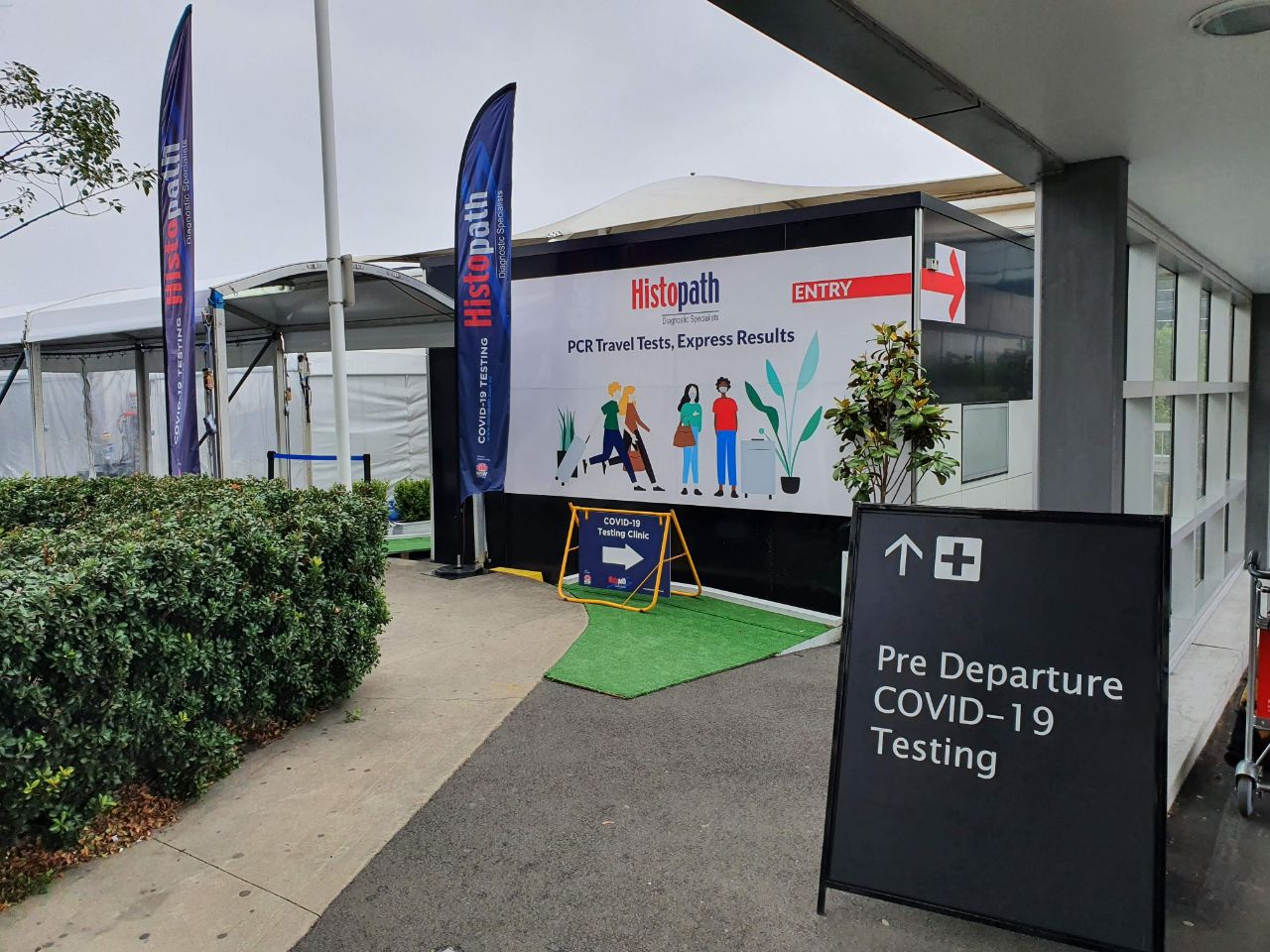
VTL Travellers to Singapore must take a pre-departure ART or PCR test within 2 days of their scheduled departure time. For example, if your flight departs at 9 p.m on 18 December 2021, you can take your test anytime from 12 a.m on 16 December 2021.
An ART swab is obviously preferable, due to its lower cost and faster turnaround time- you can do it just before checking in at the airport.
At Sydney Airport, the swabbing area is found on the departures level at T1 (where all the international flights operate out of), in an outdoor tentage opposite Row E. It’s impossible to miss.

There’s no need to book a prior appointment (in fact, you can’t), although you can prepay online to save yourself a minute or two. An antigen test costs A$59, with results available within 30 minutes.
There was no queue when I arrived at 1 p.m, and I was attended to immediately. It may get more crowded in the evenings, so those on SQ242 (7.10 p.m departure) might want to give themselves a bit more buffer.
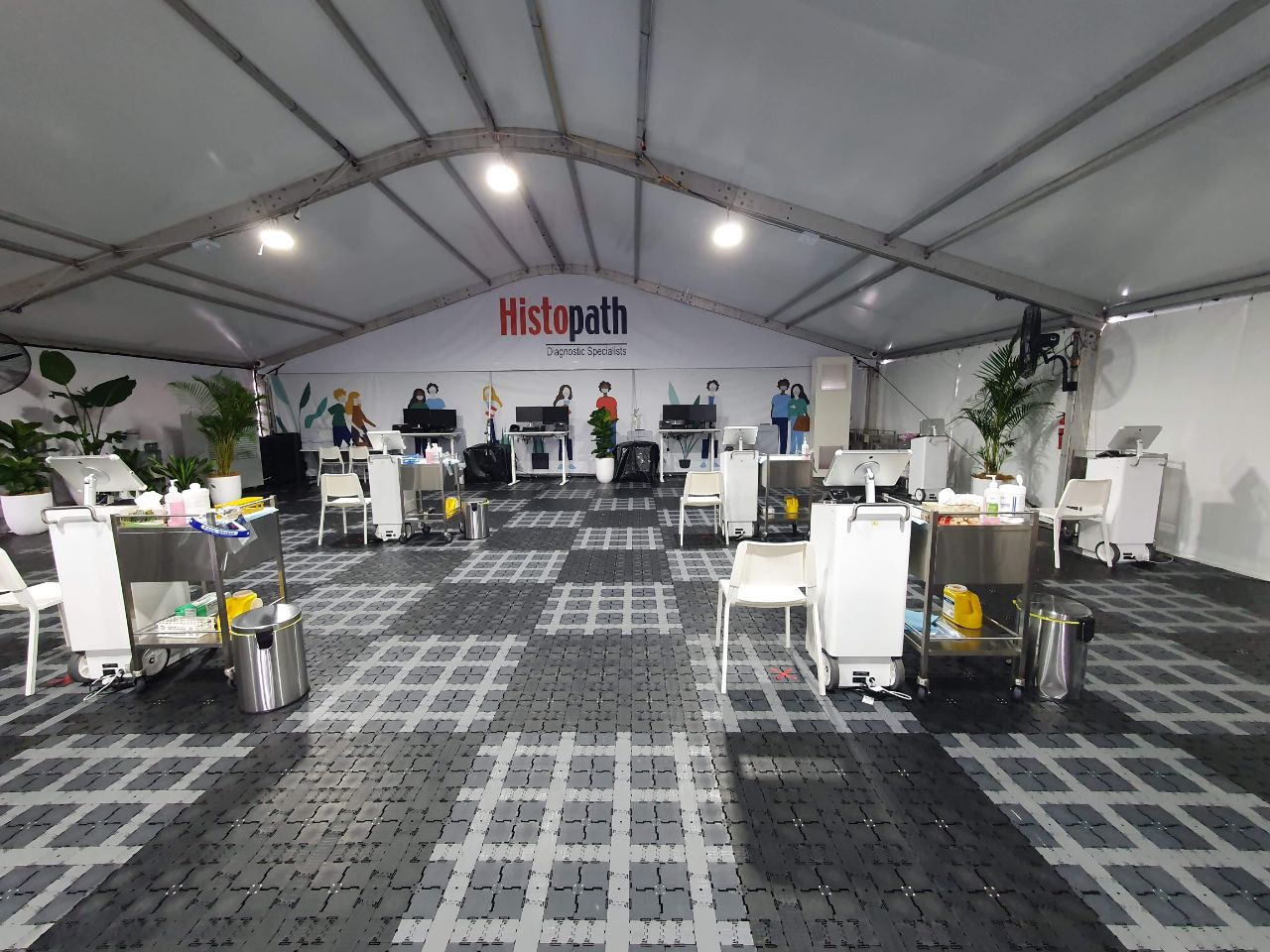
My test results took just 15 minutes, and were emailed to me in soft copy. If you want, you can return to the tent and ask them to print out a hard copy, but it’s not needed for travel to Singapore.
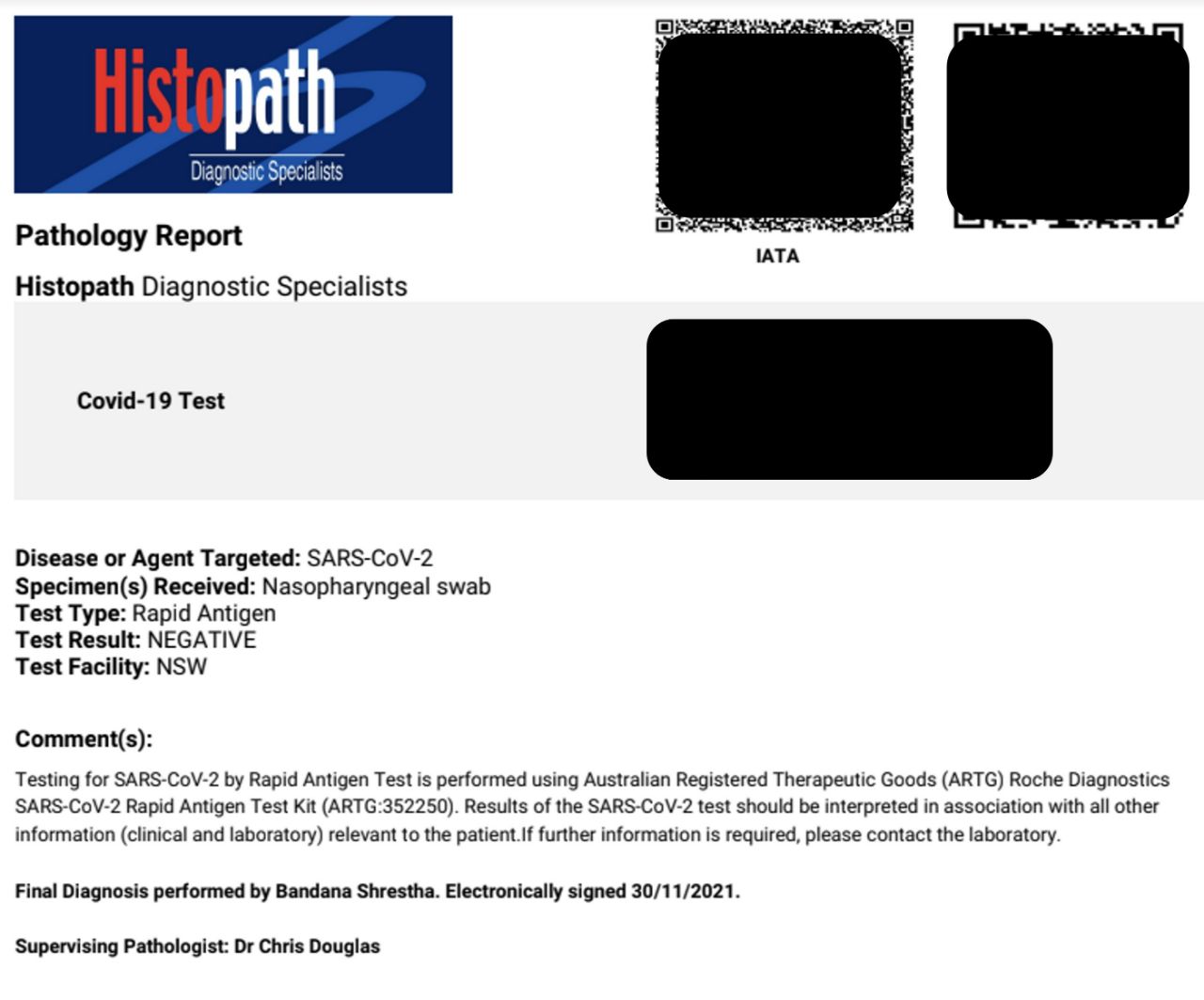
Post-COVID life in Sydney
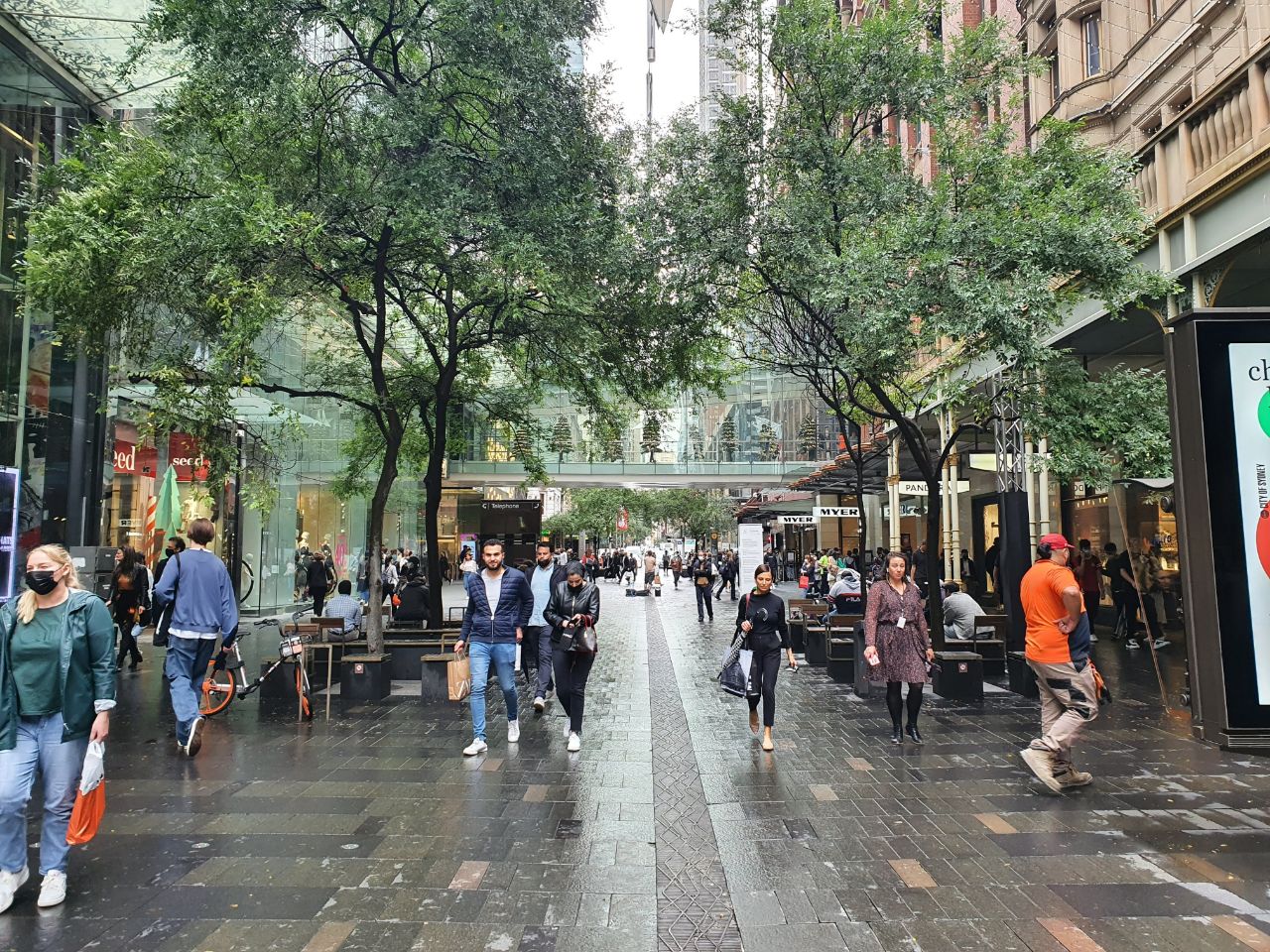
The last time I visited Sydney was in 2018, as part of my review of Singapore Airlines’ new A380 Suites and Business Class products.
Surprisingly, if not for the lack of international tourists, I’d be hard pressed to tell what’s changed. There’s still a lot of life about Sydney- weekend markets are running, restaurants are full (everyone’s doing revenge dining after the lockdown ended in early October), hotels are packed with weekend staycationers, and shoppers were out in force during the Black Friday sales.

I mean, granted, some of the usual tourist haunts are practically deserted. I was stunned to see the Sydney Opera House so empty- the steps are normally swamped with people. If you’ve ever wanted to visit Bondi Beach, or Harbour Bridge, or the Botanic Gardens without the crowds, I can’t think of a better opportunity. After all, with only New Zealanders and Singaporeans allowed in at the moment, it’s like you have early access to Disneyland.
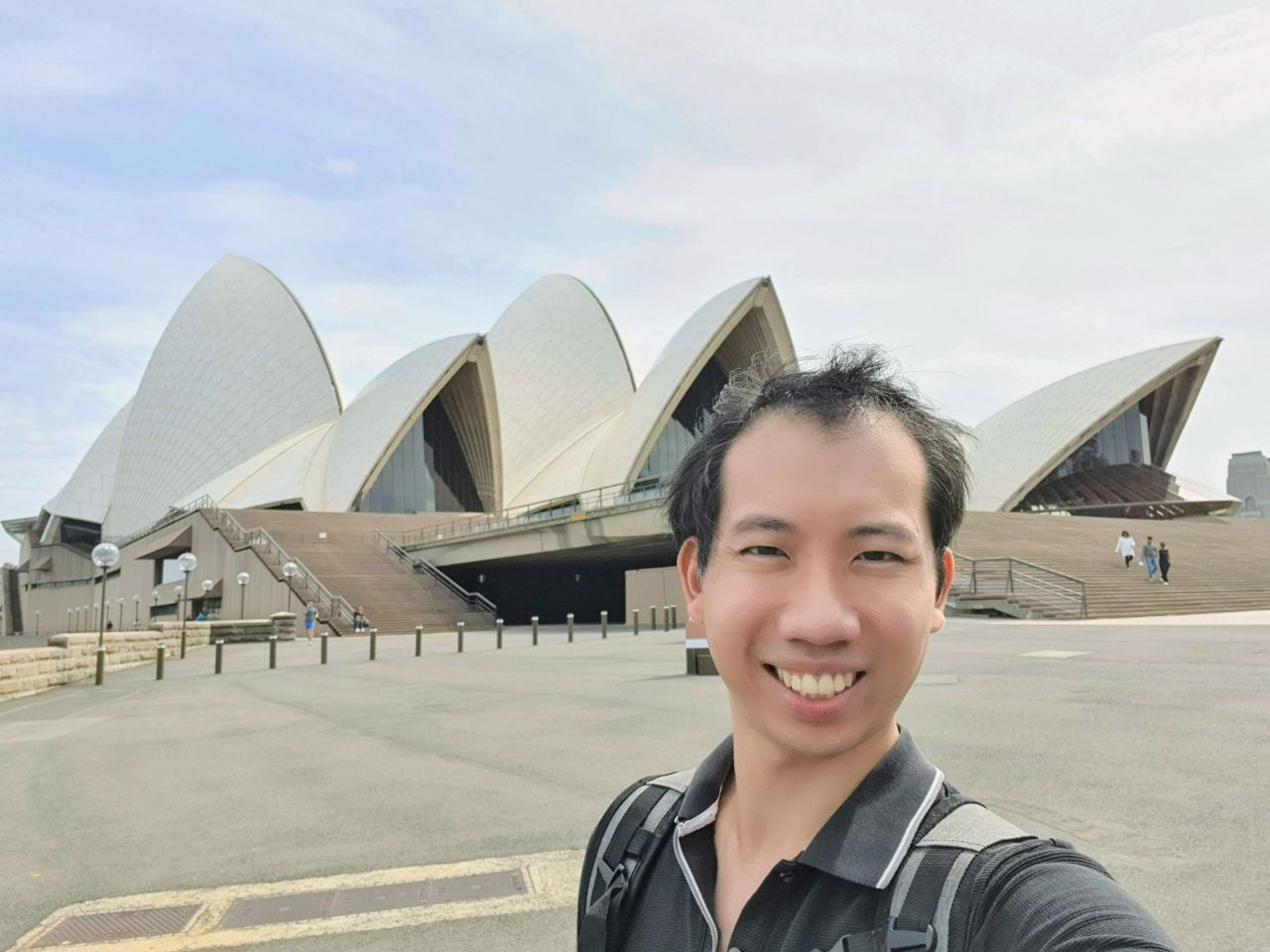
I did have the misfortune of running into an anti-lockdown and vaccine mandate demonstration, which was the usual assortment of far right agitators, QAnon slogans and grammatically-inaccurate signs, but it was somewhat reassuring that everyone else watching the procession was treating it with thinly-veiled disdain. “Bunch of morons,” said the receptionist at the hotel when quizzed about what was going on.


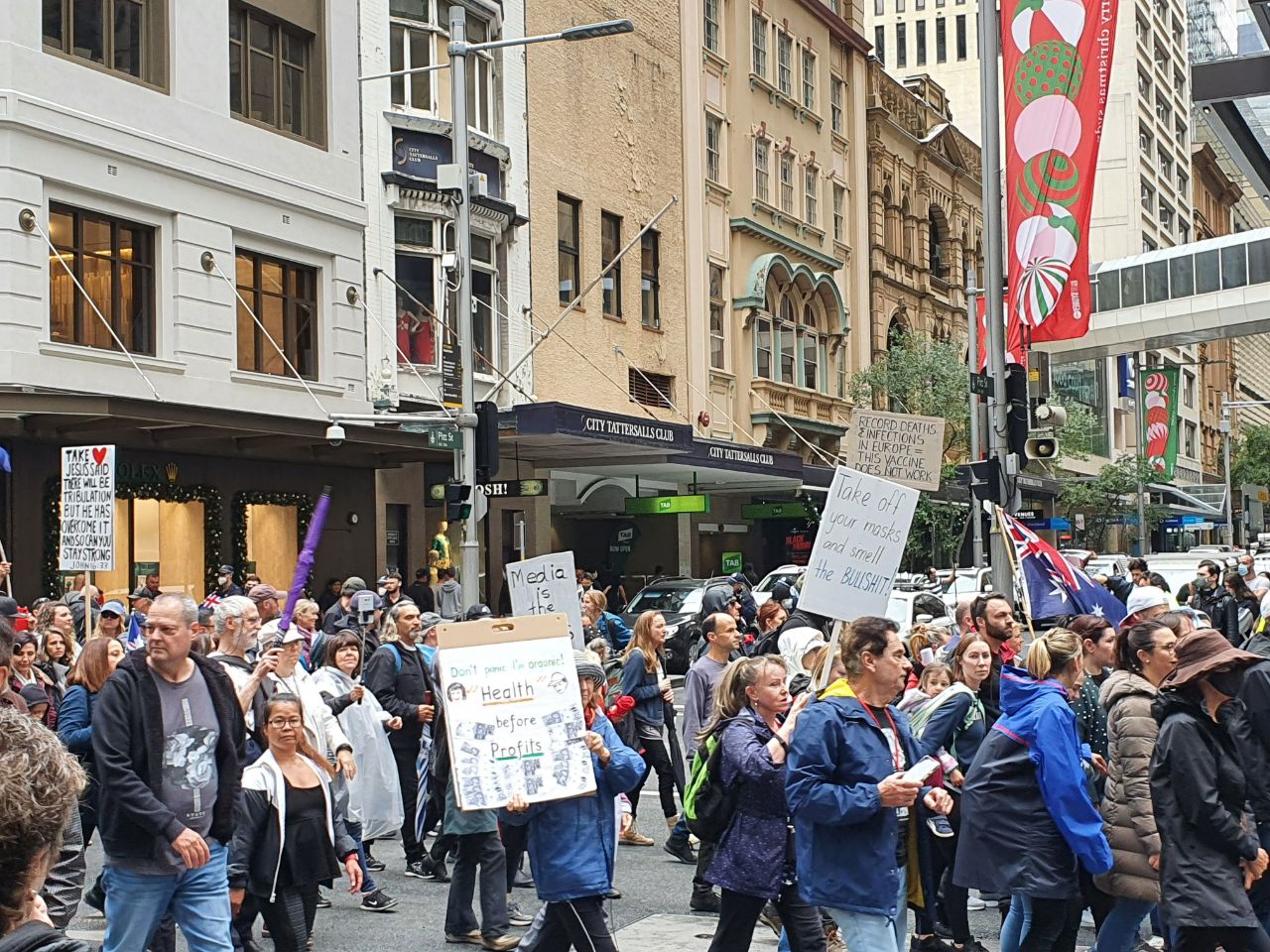
And look, NSW is ~93% fully vaccinated, so we’re really talking about a very small (and vocal) minority. I almost felt like drafting my own sign (“Free 5G Wi-Fi Hotspot”) and joining in the procession, but was running late for brunch.
Conclusion
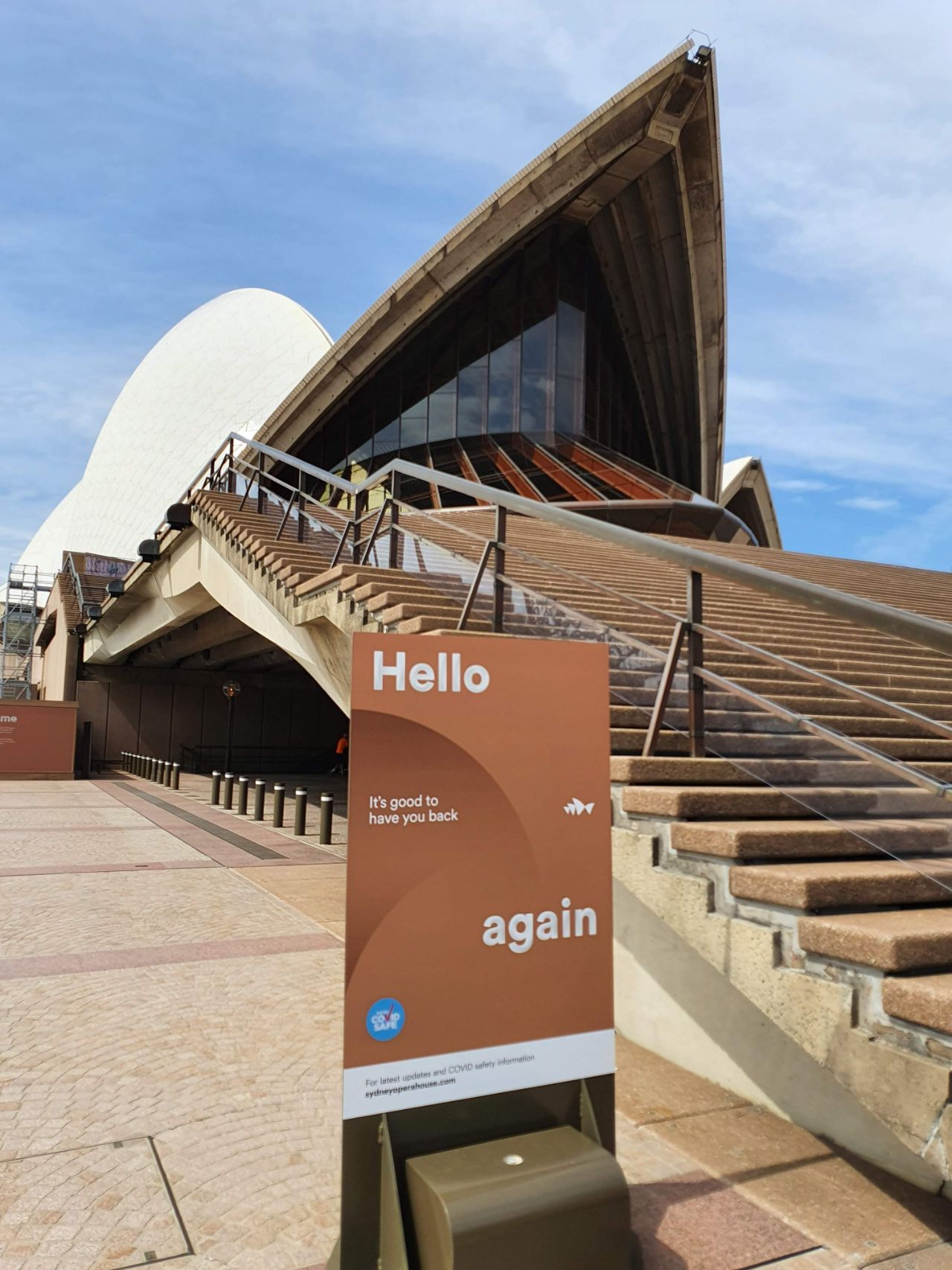
Although the 72-hour self-isolation is far from ideal, those willing to endure it will find that life in Sydney is refreshingly normal. It could potentially get even better from 15 December, although it remains to be seen how many of the proposed changes will actually happen in light of Omicron.
The arrivals process at Sydney Airport was also hassle-free, although to be fair I did arrive before the isolation requirement came into effect on 28 November (from what I understand it’s largely the same process, just that you get a document informing you about your isolation obligations).
The hermit kingdom’s reopening may be temporarily on hold, but there’s a lot to look forward to once you’re in.





Yes, glad that we were there before 28/Nov.
Sure could see some didn’t don masks inside trains and malls, no SDA there to enforce, haha.
Came back on the 27th. Glad I missed the changes. When I looked around the cabin I was wondering how many of the people on board will kick up a stink when (not if) the rules change and they have problems getting back into Australia. I fully accept the consequences of my actions, seems that many others don’t.
Heyy, did your pre departure testing cert reflect your passport number? Mine only contains my name and date of birth, I am worried this will not be recognized..
My Histopath pre-departure test in Sydney had my passport number and SIA certainly verified it when checking in. I’d try to make sure that whatever you have is acceptable before going to the airport. And/or get there early enough to do another test at the airport if required.
according to ICA, your test must
-Be in English (or accompanied with an English translation);
-Contain the traveller’s name, and Date of Birth or Passport number (per the passport used to travel to Singapore); and
-Reflect the date and result of the test
so DOB is sufficient.
You definitely arrived at the right time, glad you had no issues for the most part! I believe the bit you referenced about about getting your vaccinations added to the Australian Immunisation Register is really aimed at Australian residents who got vaccinated while overseas, not tourists. (Boring details: You need to deal with Medicare or otherwise get an Individual Healthcare Identifier, along with setting up the myGov service, before you can link it to Service NSW.) An Australia Travel Declaration should definitely be accepted. (A paper version of a local record should also be, it doesn’t have to be in… Read more »
Yep the Australian Immunisation Register is only for Australians. There was no way for me to get my vaccination status updated in the Service NSW app. My electronic/paper Singapore record was accepted by a person manning the door at a hotel entrance but I only bothered trying once.
Hi Aaron, will be arriving into Melbourne airport on the 25th – do you know where can I do the on arrival PCR test? Or if there is any testing centers in the Melbourne Airport? Read that there is Histopath, but that seems to be more for pre departure tests
Hi
I am also trying to find out if you can do the arrival PCR test in Melbourne airport.
Hello, same here! would anyone be generous enough to share about their experience please?
There is no option to do a on arrival PCR test at Melbourne airport. You will need to go to a testing center but good luck as the wait time for the test and to get the results back is horrendous during this period.